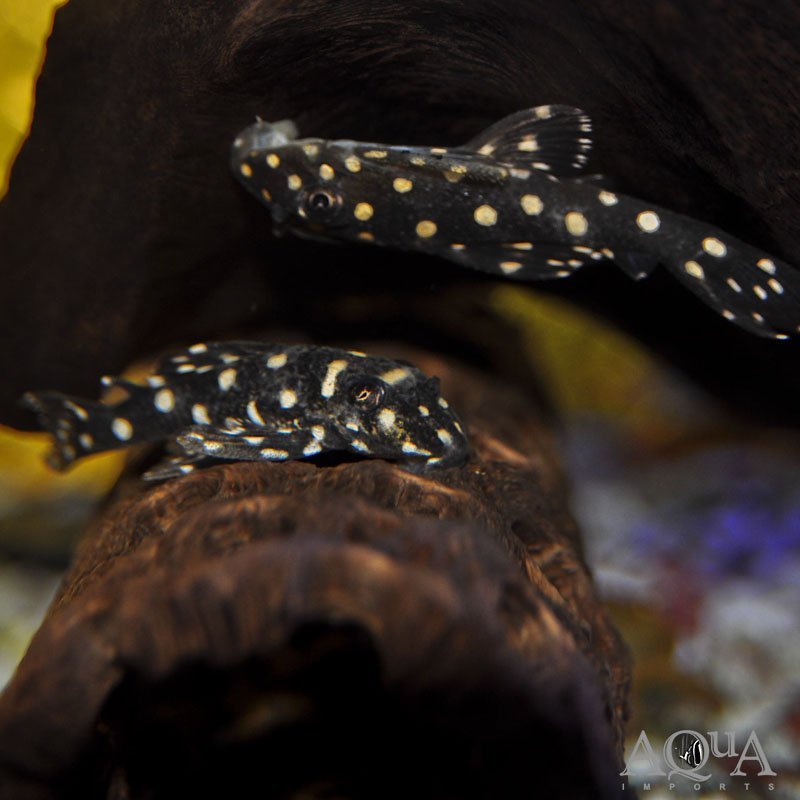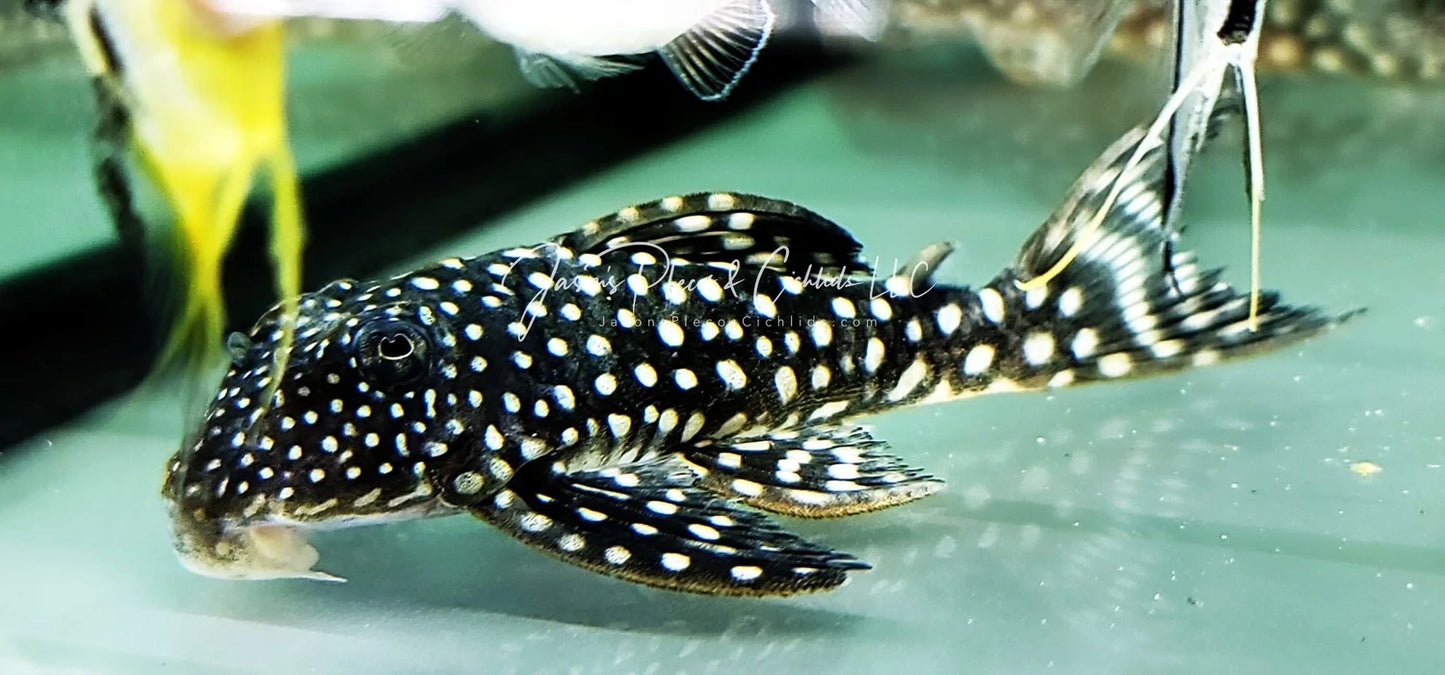Inspector Pleco
Inspector Pleco
The Inspector Pleco, scientifically known as Panaque cochliodon, is a striking and unique species of wood-eating plecostomus native to the Amazon River Basin in South America. Recognized for its bold markings, dark coloration, and distinctive body structure, the Inspector Pleco is a fascinating addition to well-maintained aquariums, particularly those with plenty of wood and plant life. This pleco is also valued for its role in algae control and the consumption of wood.
🐠 Appearance:
-
Size: Typically grows to 8–10 inches (20–25 cm), although some can reach up to 12 inches (30 cm) in larger tanks.
-
Coloration:
-
The body is generally dark brown to black with intricate light-colored markings that form patterns resembling streaks or spots.
-
Its markings may vary, but the contrast between the dark body and lighter patterns makes it visually striking.
-
Fins are typically dark and may have light-colored edges or spots.
-
-
Body Shape: The flattened and robust body is designed for gripping onto wood surfaces, while the large pectoral fins help it cling to hard surfaces, making it an excellent wood scraper.
🌿 Tank Requirements:
-
Tank Size: Minimum 75 gallons for a single Inspector Pleco. Larger tanks are recommended if keeping multiple plecos.
-
Water Parameters:
-
Temperature: 74–80°F (23–27°C)
-
pH: 6.5–7.5 (slightly acidic to neutral)
-
Water Hardness: Soft to moderately hard
-
-
Environment:
-
Prefers tanks with a lot of driftwood, which is necessary for its wood-eating habits.
-
Planted tanks are ideal, as long as there are sufficient open spaces and hiding spots for the pleco to feel secure.
-
Sand or fine gravel substrate is ideal, as it mimics the riverbed environment and reduces the risk of injury.
-
🏡 Behavior & Compatibility:
-
Temperament: The Inspector Pleco is generally peaceful but can be territorial, especially with other bottom-dwelling fish or plecos. It may occasionally display solitary behavior.
-
Tankmates:
-
Best kept with other peaceful species such as tetras, rasboras, gouramis, and other non-aggressive fish.
-
Avoid housing with larger or more aggressive species that may outcompete the pleco for food or space.
-
While the Inspector Pleco is peaceful, it is best to keep it with other bottom dwellers only if the tank is large enough to avoid territorial conflicts.
-
🍤 Diet:
-
Omnivorous with a focus on wood: The Inspector Pleco is best known for its ability to eat wood, specifically driftwood, which it scrapes with its specialized mouth and teeth. This behavior helps break down the wood's cellulose and provides the pleco with essential nutrients.
-
In Captivity:
-
In addition to wood, it can also be fed algae wafers, blanched vegetables (e.g., zucchini, spinach), and occasional live or frozen foods like bloodworms or brine shrimp for variety.
-
The pleco will also appreciate the occasional high-quality sinking pellets.
-
🧑🍼 Breeding:
-
Breeding the Inspector Pleco in captivity is quite rare and typically requires specific conditions, such as a mature, well-established tank with driftwood and a stable environment.
-
They are cave breeders, with males often guarding the eggs in caves or crevices until they hatch.
-
There is not much public information on breeding in captivity, as these fish tend to be more challenging to breed in home aquariums.
The Inspector Pleco is an excellent choice for aquarists looking to maintain a natural and wood-heavy aquarium. Its ability to consume algae and break down wood makes it a useful addition to tanks where these tasks are desired. With its unique appearance and peaceful nature, the Inspector Pleco can be a stunning and helpful addition to your aquarium, provided there is enough space and proper conditions for it to thrive.
Product features
Product features
Materials and care
Materials and care
Merchandising tips
Merchandising tips
Share






